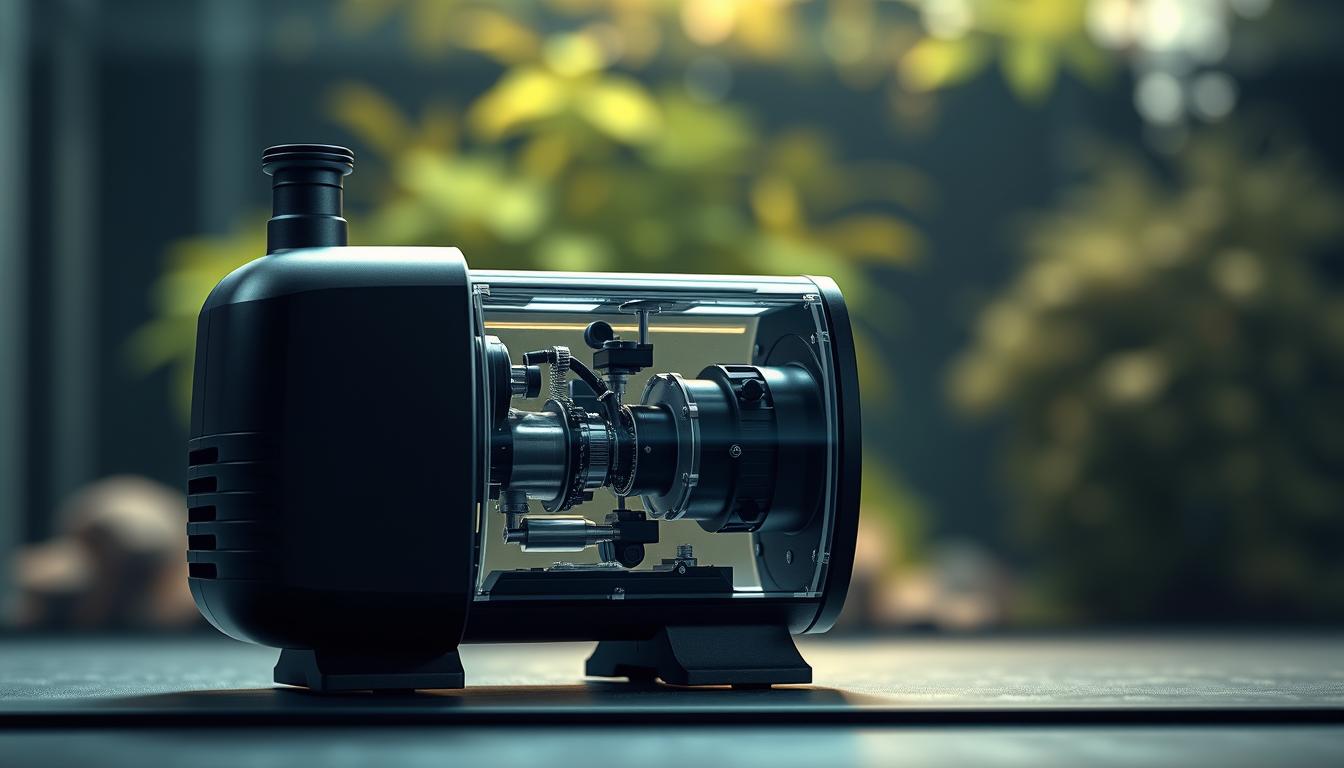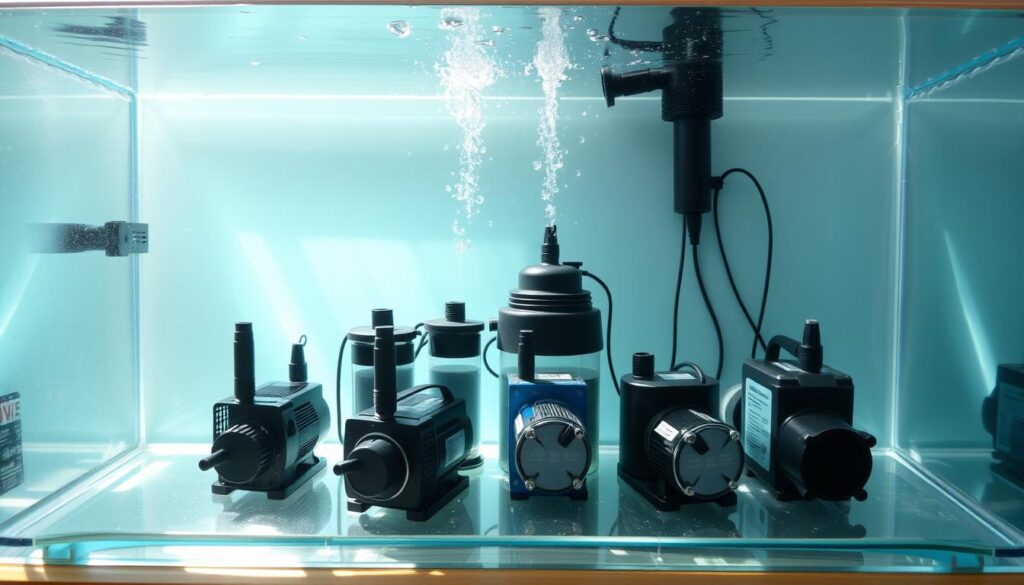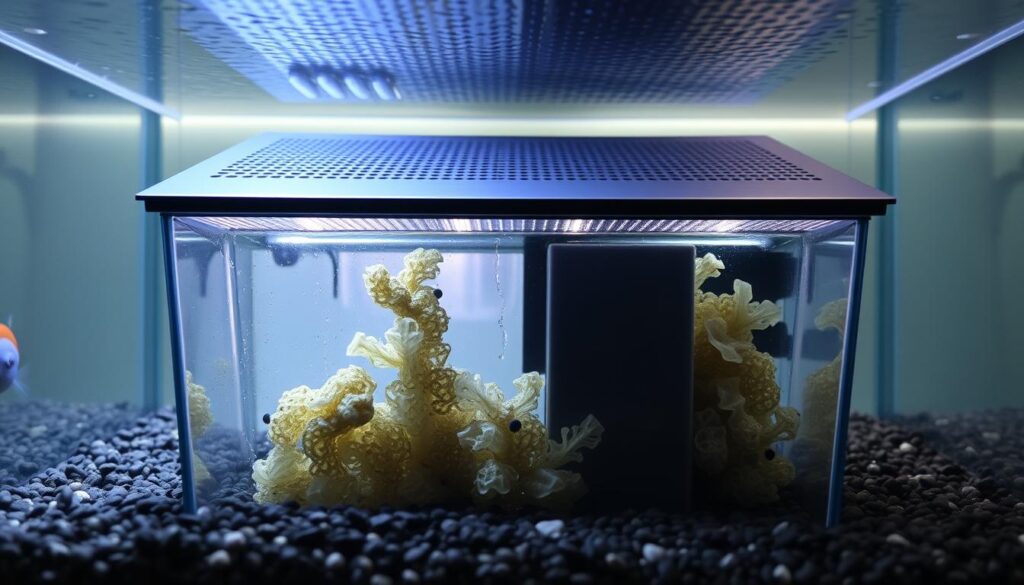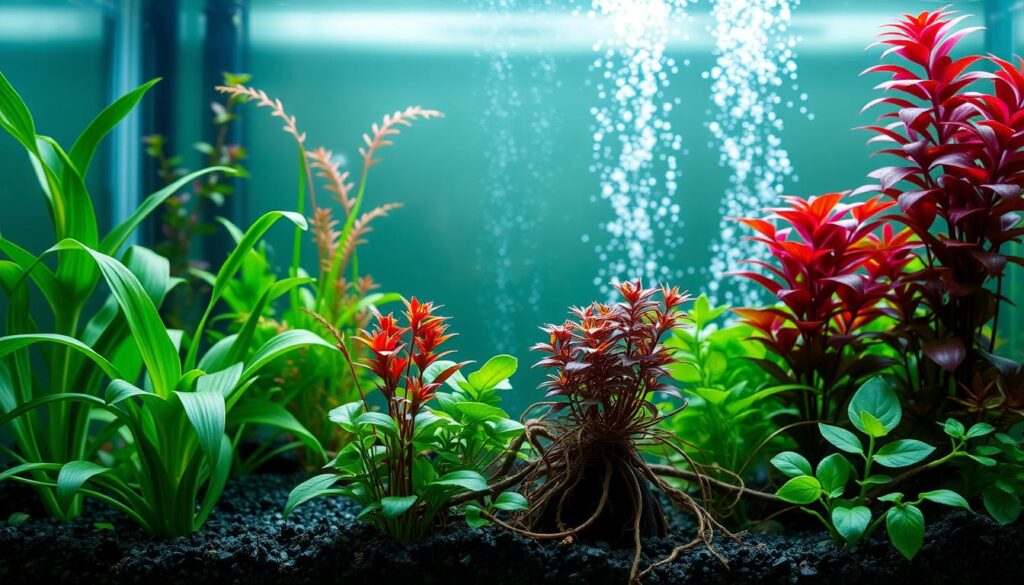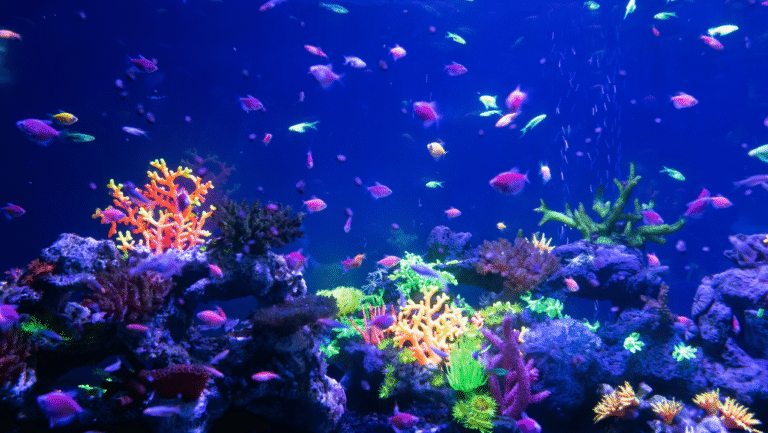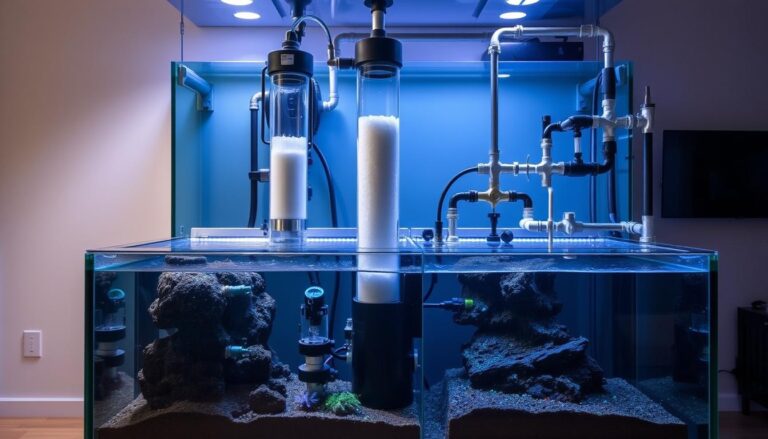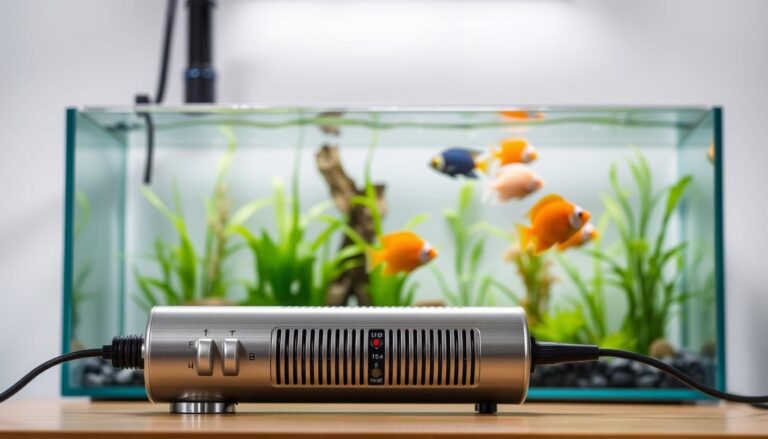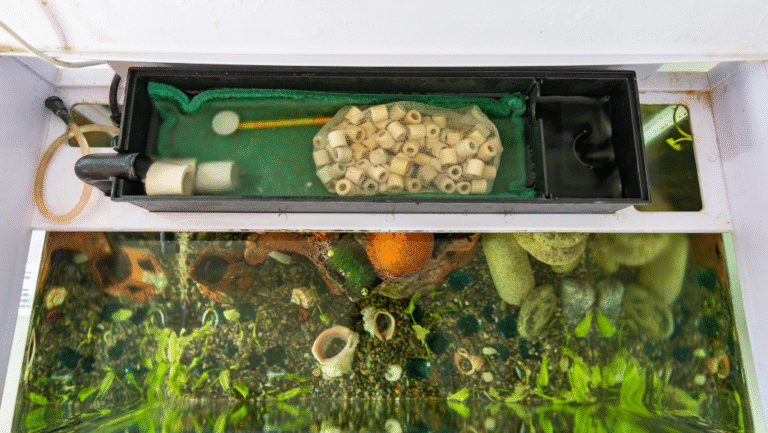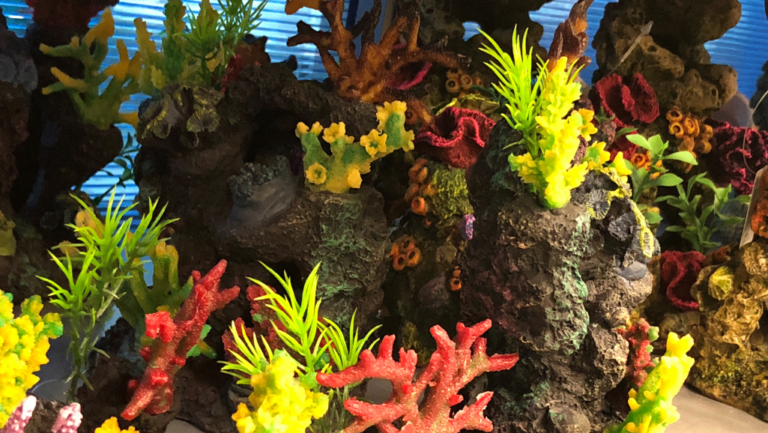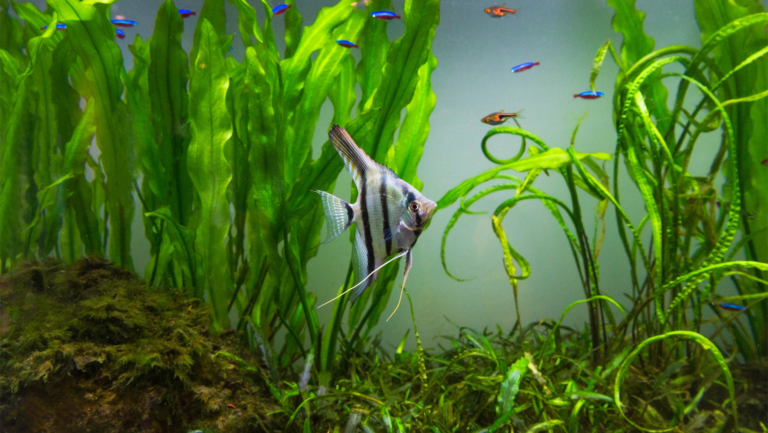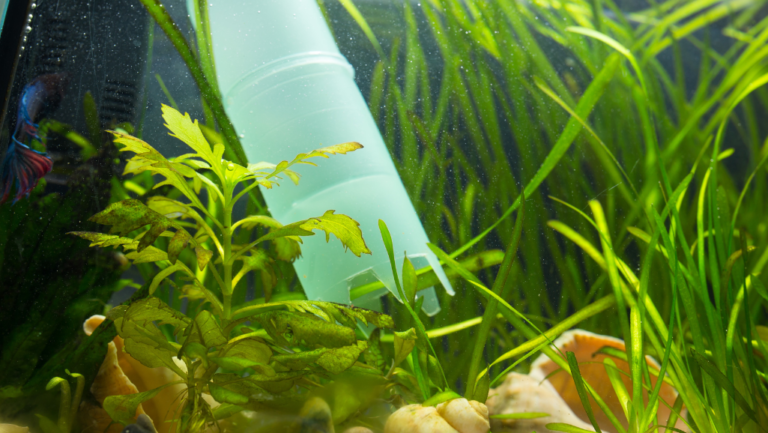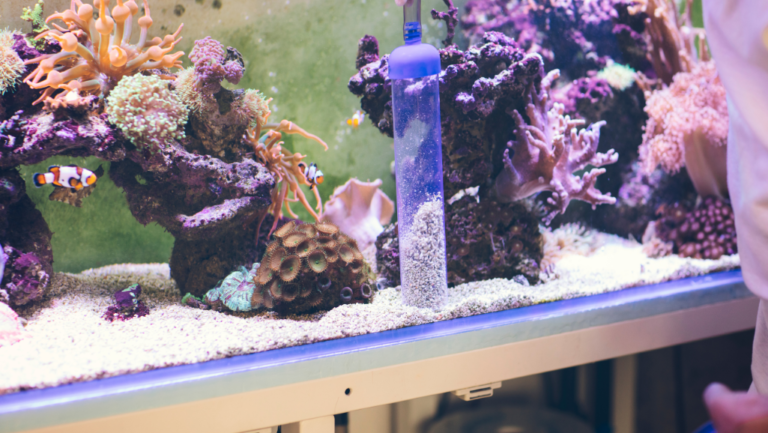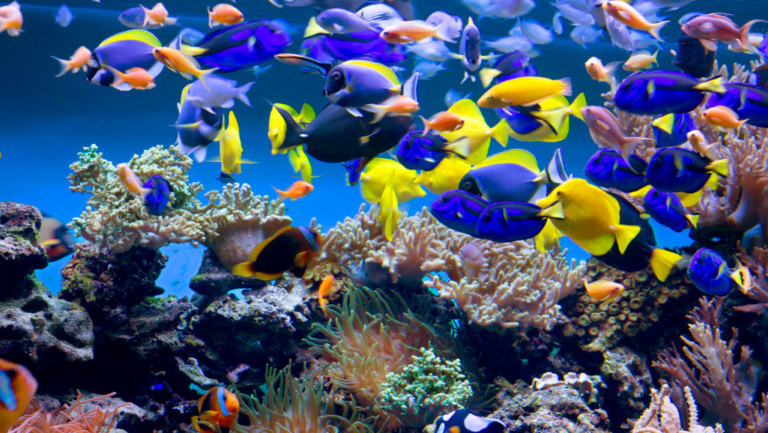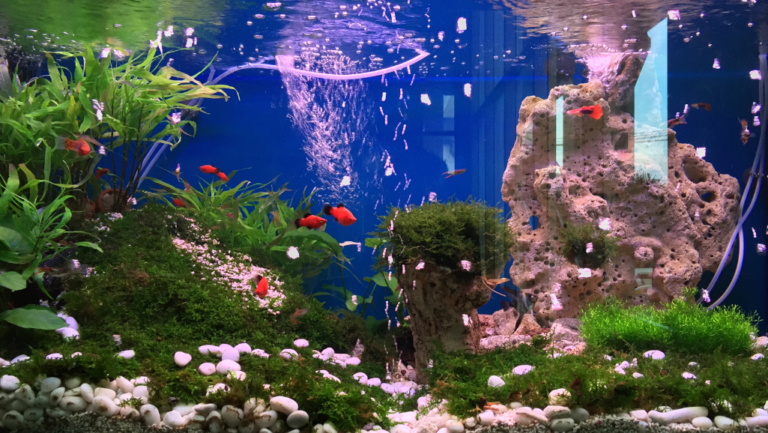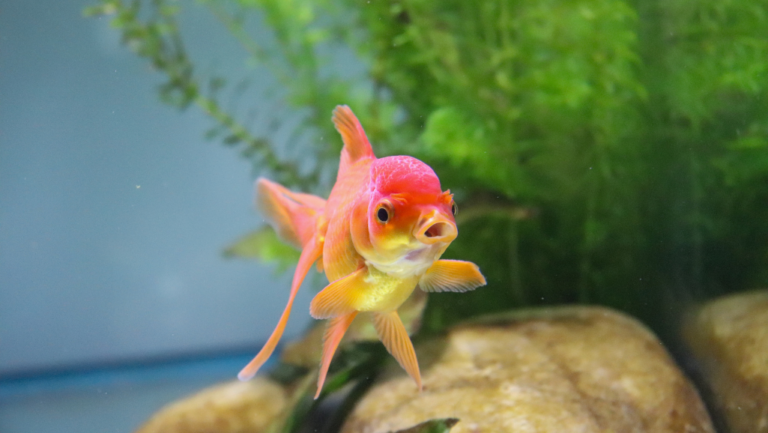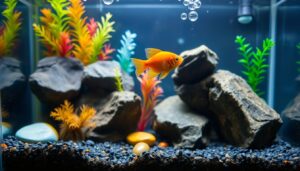Start your journey to a calmer, clearer home oasis by choosing the right gear. PetSmart offers a wide range of aquarium supplies and decor, while AquaDreamUSA has built reliable systems since 1999. These names bring proven engineering and thoughtful design to every choice.
Steady circulation supports beneficial bacteria, clearer water, and gentle motion that helps aquatic life thrive. Quiet, energy-wise units protect gills and improve biofiltration so your display stays vivid and healthy.
Look for models that balance precise flow control with easy upkeep. Check sale price and overall price comparisons to find premium options that match your goals, whether you care for a single betta or a lively community.
Key Takeaways
- pump for fish tank.
- Choose trusted brands with a record of quality since 1999.
- Prioritize quiet, steady flow to support water quality and health.
- Match device size and flow to your aquarium’s layout and livestock.
- Consider sale price and long-term energy cost when shopping.
- Pick gear that makes maintenance simple and reliable.
Discover premium pumps to elevate your aquarium’s health and beauty
Choose refined circulation systems that make aquariums clearer and more vibrant. AquaDreamUSA has crafted premium solutions since 1999, serving the United States, Europe, and Australia with proven engineering.
Built to last: units combine durable materials, whisper-quiet motors, and smart controllers to keep water moving and colors bright.
Enjoy a careful selection that balances strong performance with low energy use. Gentle, steady flow supports biological filtration and reduces debris. That steady motion helps fish show natural behaviors and stay calmer.
- Efficiency: energy-smart designs cut long-term price and operating cost.
- Serviceability: easy install and simple maintenance save time on routine care.
- Support: manuals and responsive help guide setup and tuning.
Search seasonal sale price deals to find the best aquarium options that match your goals. Whether you prioritize aesthetics or ecosystem health, choose gear made to elevate both beauty and wellness.
Shop pumps by aquarium type and purpose
Find the right category to match your aquarium’s rhythm and maintenance style. Start with the role you need: circulation, aeration, or compact filtration. That makes it easy to compare specs and choose equipment that fits your goals.
Water pumps drive circulation and support filtration. Wave makers add rhythmic motion for reef and planted displays. Air options boost oxygen and help filter media breathe.
Water pumps for aquariums and fish tanks
Choose from bottom‑suction and adjustable submersible models when low water or directional flow matters. These excel at targeted circulation and debris control.
Wave makers for natural flow in aquariums
Wave makers mimic reef currents. They reduce dead spots and encourage natural behaviors in active communities.
Air pumps for oxygen and filtration support
Air systems aid biological filtration and surface gas exchange. They pair well with undergravel or sponge filters.
3-in-1 internal filter pumps for compact filtration
These combine flow, mechanical media, and ease of service. Ideal for nano builds and tight setups where modularity matters.
Amphibious external inline pumps for flexible setups
External inline units clear in‑tank clutter and simplify plumbing. They are great when you want a neat display and strong performance.
ECO sine-wave and variable frequency pumps for efficiency
Optimize noise and energy use with sine‑wave and VFD designs. Fine tuning output saves power and tailors flow to each ecosystem.
“Match category to goal, then compare features—maintenance, modularity, and price—before you shop.”
- Build filtration around media and biology goals.
- Scale from planted aquascapes to high‑energy reef systems.
- Look for accessible impellers and simple controls to streamline upkeep.
Choose the right pump for fish tank size and capacity
Match circulation capacity to your display’s gallon rating to keep water steady and life thriving.
Right sizing starts with capacity groups: Medium (30–110 gallons), Large (120–250 gallons), and Extra‑Large (260–600 gallons). Pick flow ranges that suit each class to keep turnover balanced and filtration effective.
Medium tanks: 30-110 gallons
Choose compact, internal 3‑in‑1 options when space is tight. These combine flow, media, and easy service for modest aquariums.
Target 5–10x hourly turnover, and confirm final flow after adding filter media and decor.
Large tanks: 120-250 gallons
Pair external inline units with a sump to move high water quietly. Account for head height, bends, and plumbing losses when comparing price and sale price on models.
Pro tip: choose units with adjustable output to tune flow to livestock and scape density.
Extra-large tanks: 260-600 gallons
Favor variable‑speed or ECO sine‑wave models for massive displays. Wave makers help lift detritus and remove dead spots without overdriving the display.
Anticipate growth by selecting gear with headroom and validate flow at the aquarium after installation.
“Size by capacity, tune for life — that keeps systems stable and maintenance simple.”
- Size by capacity and desired turnover.
- Factor head height and plumbing path losses.
- Validate real-world flow at the display.
pump for fish tank: our curated selection for clean, clear water
Discover carefully chosen circulation and filter combos that make maintenance simple and water crystal clear.
Browse a focused selection of products that link quiet circulation with matching filters. PetSmart stocks canister, external, internal, and power filters plus bulk media and replacement parts to tune performance.
Choose compact units for smaller footprints or robust, adjustable systems when you need multi‑zone flow. Pair these with undergravel or chemical media to balance mechanical and biological clarity.
- Find balanced, quiet options that integrate with canister and internal filter setups.
- Minimize upkeep while maximizing clarity and steady circulation across your aquascape.
- Keep essential parts, air and water accessories, and media close to speed routine tune‑ups.
Complement your flow with tasteful substrates, plants, and ornaments that help trap debris and support beneficial bacteria. Look at sale price and price options to get the best value. Build with intent and enjoy a brighter, more peaceful aquarium life.
Airflow and oxygen: build your perfect air system
Build a backbone of dependable airline parts to keep oxygen levels stable during any power hiccup. Start with quality tubing, weighted air stones, and precise metal valves to make aeration predictable and quiet. A thoughtful layout reduces noise and simplifies maintenance.
Air stones, adjustable valves, and airline tubing
Choose components that give control and longevity. Use black airline tubing, check valves, and gang valves to route air cleanly. Weighted or adjustable air stones let you tune bubble size and coverage without extra noise.
- Durable tubing: resists kinking and salt creep.
- Precision control: barbed metal air control valves and Ziss adjustable stones for fine tuning.
- Neat routing: airline holders and straight connectors keep lines tidy.
Battery backup air pumps for peace of mind
Add an Air Pump with Battery Backup to protect dissolved oxygen when power fails. Use T splitters or a 4‑way metal gang valve to share backup air between displays.
Keep spare parts on hand—check valves, connectors, and a small toolkit—to restore flow fast and avoid stress to livestock.
“Design for resilience: redundancy in air systems can be a lifesaver during unexpected downtime.”
- Pair air delivery with sponge or undergravel systems to boost biological stability.
- Distribute air evenly using T splitters and manifold valves across multiple devices.
- Consider price and sale price when buying quality supplies and equipment to balance value and performance.
Filtration equipment and undergravel filter options
Good filtration starts with matching equipment to your aquarium’s workload and maintenance habits. Pick systems that make care predictable and keep water chemistry steady. This helps plants and livestock thrive while you spend less time on chores.
Bulk media and replacement parts
Buy bulk filter media to tune mechanical, chemical, and biological cleaning. Media lets you polish water, trap debris, and grow beneficial bacteria where you need it.
Keep spare parts—impellers, seals, and cartridges—handy to avoid downtime and protect water quality.
Canister, internal, power, and external filters
Explore canister, internal, power, and external options to match maintenance style and bio‑load. Canisters excel at heavy loads; internals suit compact displays; externals keep the display tidy.
- Align pump aquarium output with filter capacity to prevent bypass.
- Use pre‑filters or sponge covers to protect small inhabitants and extend service intervals.
- Check sale price and price to balance value and long‑term performance.
Undergravel filters and airflow integration
Undergravel filter plates pair well with airlift or small powerheads to create an oxygen‑rich biofilter beneath the substrate. This boosts biological filtration while lifting detritus to the intake.
Tip: For planted systems, balance CO2 and surface agitation so plants get gas without losing filtration efficiency.
“Build redundancy—backup air and modular media keep biology stable during surprises.”
Coral reef aquariums: pumps and protein skimmers that perform
Successful coral displays blend rhythmic water motion, efficient organic removal, and targeted lighting. Use the right equipment to create natural currents and stable chemistry while keeping the display tidy.
Wave makers and LED coral lighting synergy
Wave makers produce tidal motion that prevents detritus buildup and delivers nutrients to corals.
Pair LED coral lights with flow patterns so polyps open fully and color intensifies. Match intensity and spectrum to coral type for best aquarium results.
External inline pump systems for reef stability
External inline systems keep hardware out of the display and reduce unwanted heat transfer.
- Combine protein skimmers with steady return pumps to export organics and stabilize pH and oxygen.
- Choose ECO sine‑wave or variable‑frequency models to tune turnover and daily flow cycles.
- Design redundancy to guard against stalled areas and equipment downtime.
- Manage microbubbles and noise with baffles and proper plumbing to protect livestock.
“Scale output as colonies grow, and keep maintenance simple so the reef stays vibrant.”
From ponds to hydroponics: versatile pumps beyond the tank
Extend garden life and indoor systems with gear built to move water across long runs and changing seasons.
AquaDreamUSA supports landscapes, hydroponics, and ponds with amphibious external inline units, ECO sine‑wave models, and variable frequency designs. These choices handle head pressure, elevation, and continuous operation for 24/7 systems.
Use drum and shower trickle filters to manage heavy bio‑loads in stocked ponds. Add UV sterilizers and pond protein skimmers to sharpen clarity and reduce free‑floating algae.
- Choose amphibious inline designs that adapt from sump rooms to garden beds.
- Plan plumbing for long runs and elevation changes common in landscaping.
- Prioritize weather resistance, modular parts, and easy service to cut downtime.
“Design systems that grow with the seasons and share gear across aquariums, ponds, and hydro setups.”
Balance sale price and overall price when buying supplies. Pick quiet, insulated housings and thoughtful placement to keep noise low near living spaces.
Set up with confidence: guides, manuals, and videos
Clear resources make installation calm and dependable. Start with guided videos and printable manuals that walk through every step. These materials help you install lines, prime systems, and reduce noise without stress.
Aquarium setup guides and pump/filter walkthroughs
Step‑by‑step videos show how to connect plumbing, place intakes and returns, and tune flow. Short clips cover priming techniques and quieting tips so biology stays safe.
Downloadable catalogs and step-by-step manuals
- Use printable catalogs to compare specs, fittings, and products at a glance.
- Access FAQs for sizing, head height, and compatibility answers.
- Keep warranty details and Track My Package tools handy when you shop supplies and parts.
“Follow best‑practice startup sequences to protect beneficial bacteria and livestock.”
Care, supplies, and live plants to complete your tank
Complete your display with plants, gravel, and gear that enrich habitat and simplify routine care.
Artificial plants, live plants, decor, gravel, and substrate
Start with the base: choose substrate, stones, and hardscape that direct flow and trap detritus away from delicate areas.
PetSmart stocks a wide range of artificial and live plants plus backgrounds and ornaments to craft a natural look.
Food, daily care supplies, and premium parts
Pick high‑quality food to support color, activity, and immune health. Keep conditioners, test kits, and nets on hand to make upkeep simple.
Protect equipment with pre‑filters, check valves, and spare impellers so service stays fast and predictable.
- Use air-driven sponges or an undergravel filter to boost gentle, reliable biofiltration.
- Position decor to guide circulation throughout the display and aid the filter’s work.
- Stock spares and match supplies to your biotope goals for long‑term success.
“Bring aesthetics and function together to build a system that looks beautiful and performs effortlessly.”
Compare pumps: flow rate, head height, and energy use
Begin your comparison by translating rated flow into real-world turnover after plumbing.
Rated vs real flow: Manufacturers list ideal output at zero head. Measure your head height and count elbows; these cut flow dramatically. Test flow at the return after installation to confirm performance.
Energy and duty cycle: Compare watts at typical speed. ECO sine‑wave and variable frequency designs save power on 24/7 runs and reduce long‑term price of ownership.
Noise and mounting: Inline, submersible, and suspended formats each have distinct sound profiles. Choose the mounting style that trades lowest noise for service access.
- Impeller design and ease of cleaning impact reliability and maintenance intervals.
- Control options range from simple dials to full variable controllers with feed modes.
- Match output to filter capacity to avoid bypass and keep turnover steady.
- Verify compatibility with undergravel filter or sump systems before purchase.
“Balance initial price with warranty, parts availability, and lifespan to find the best total value.”
Final tip: Track real flow, noise, and energy during the first month. That data helps decide whether a sale price or price 39.99 deal truly delivers long‑term value to your aquarium, water, air, and filtration equipment needs.
Best aquarium brands, premium construction, trusted since 1999
Trust brands that pair decades of engineering with clear service paths and documented support.
AquaDreamUSA has served the United States, Europe, and Australia since 1999. Their Warranty Policy, manuals, and contact resources make setup and ongoing pet care easier. Choose gear built with quiet motors and durable components to protect your livestock and the life in your display.
Invest where it counts: reliable build quality saves time and reduces unexpected price surprises. Expect thoughtful details, easy maintenance, and responsive help when you need parts or troubleshooting. A single, well‑made pump can cut noise and extend component life while you focus on feeding and care routines.
- Proven engineering backed by clear documentation and support.
- Materials and manufacture designed for long‑term aquatic safety.
- Value legacy and refinement that show in quieter, smarter supplies.
- Look for warranties, manuals, and fast contact options when comparing sale price and price.
“Select solutions aligned to your vision, backed by years of experience and service.”
Smart shopping: price, sale price highlights, and value
Smart shoppers compare long-term savings, not only the sticker price. Start by checking total ownership: energy use, warranty length, and parts availability often matter more than a low tag.
Featured deal: select pumps from price 39.99
Featured bargains make upgrades attainable. Watch the sale price and look for units listed at price 39.99 that include basic fittings or a spare impeller.
Bundle and save on filtration and air supplies
Bundling filters with air accessories, media, and food saves time and cash. Pick packages that include needed fittings so you can shop once and install fast.
- Compare lifetime value—efficiency, warranty, and parts access.
- Use transparent pricing to plan phased upgrades within your budget.
- Prioritize reliability while taking advantage of seasonal sale offers.
- Read specs closely to match gear to your aquarium and livestock plan.
“Balance initial spend against reduced maintenance and energy costs to get lasting clarity and peace of mind.”
Fast delivery, pickup, and support across the United States
Rapid fulfillment keeps your aquarium healthy by minimizing downtime for vital parts. PetSmart offers curbside and in‑store pickup so you can grab supplies on your schedule. Same‑day delivery is available in most areas via DoorDash for urgent replacements.
Autoship is available on select items to automate routine care. Use repeat deliveries for snacks, food, and basic parts so you never run out.
Shipping policy, tracking, and warranty support
Track orders and access manuals from a central support hub. AquaDreamUSA provides a clear Warranty Policy, Track My Package tools, FAQs, and downloadable manuals to speed service.
Contact and customer service details
Reach customer service for sizing advice, troubleshooting, or parts help. Plan deliveries to match installation windows and minimize downtime.
- Get what you need quickly with curbside and in‑store pickup.
- Leverage same‑day delivery for urgent air or water repairs.
- Set Autoship to keep routine care predictable.
- Track packages and keep warranty docs handy for fast claims.
- Contact Aqua Dream USA at (360) 223‑4997 or sales@aquadreamusa.com for direct support.
“Choose partners that make logistics simple so you can focus on your aquascape.”
Community-powered care: forums, reviews, and feedback
“Tap into community wisdom to speed learning and dodge costly setup mistakes.”
Join real hobbyists in AquaDreamUSA’s Community Forum and Blog to read hands‑on tips and before‑and‑after stories. Use AquaRank reviews and product Q&A to confirm compatibility and avoid surprises when you select parts.
Find short guides in the Learning Center on head height, turnover, and controller settings. These help you tune flow, quiet noisy gear, and prolong equipment life.
Share your build and get targeted feedback on plumbing, pump choice, and aquascaping. Fellow keepers post tweaks that cut noise and improve oxygen exchange without big expense.
- Learn from real experiences to quicken setup success.
- Compare price and sale price notes before you buy supplies or spare parts.
- Find maintenance intervals that keep systems stable and clear.
- Connect with people who solved the same challenges you face now.
“Collective knowledge turns uncertainty into confident, informed action.”
Use reviews, guides, and feedback to build a reliable routine that supports plants, food plans, and happy fish.
Conclusion
Bring all elements together—flow, media, and layout—to craft a steady, healthy aquarium.
, choose gear that matches size and head height so water moves gently and predictably. Select a single reliable pump and balance output with your filtration and plants live to keep biology stable.
Mind price and sale price when you shop. Watch seasonal sale and the price 39.99 deals but weigh long‑term value and warranty.
Plan air backup, keep key supplies and spare parts, and add quality food and a tidy selection of plants to enrich the display.
Start confidently, keep learning, and enjoy the calm clarity of a well‑tuned aquarium.
